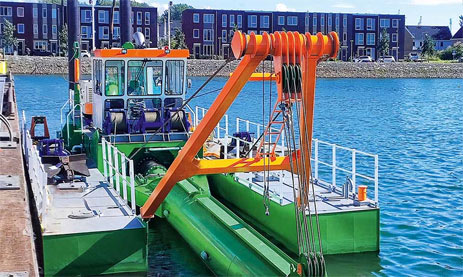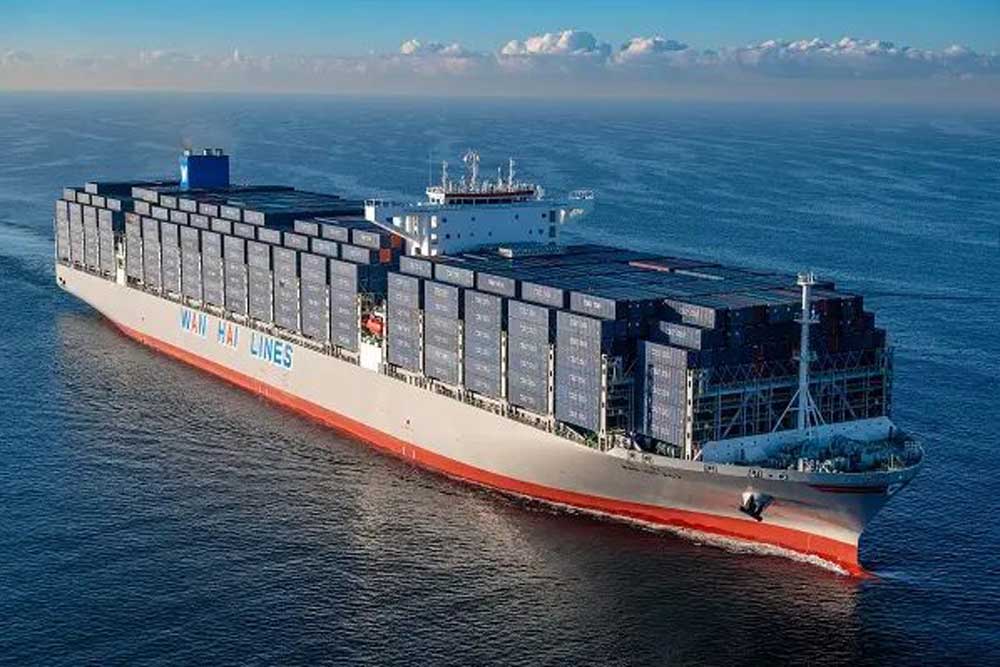The announcement of a ceasefire between the USA and the Houthi rebels could lead to a global slump in freight rates.
A return of container ships to the Red Sea could flood the market with capacity – but the situation is far from certain.
The calculation is based on data from the freight rate benchmarking platform Xeneta. According to Xeneta, the prospect of a large-scale return of container ships to the Red Sea following the announcement of a ceasefire between the US and the Houthi militia in Yemen would flood the market with shipping capacity and lead to a global slump in freight rates.
Data published by Xeneta shows that global TEU-mile demand would fall by 6% if container ships returned to using the Red Sea and Suez Canal instead of sailing around the Cape of Good Hope. TEU-mile demand takes into account the distance each container is transported worldwide and the number of containers transported. The 6% is based on a 1% growth in global container shipping demand for the full year 2025 and a large-scale return of container ships to the Red Sea in the second half of the year.
“Of all the geopolitical disruptions impacting container shipping in 2025, the conflict in the Red Sea continues to cast the longest shadow, so any significant return to the region would have a massive impact,” said Peter Sand, principal analyst at Xeneta.
“The return of container ships to the Red Sea would flood the market with capacity, which would inevitably lead to a collapse in freight rates. If imports into the US slow down further due to tariffs, the slump will be even more severe and dramatic.”
Impact on freight rates
Average spot rates from the Far East to Northern Europe and the Mediterranean are $2,100 per FEU (40-foot container) and $3,125 per FEU respectively. This represents an increase of 39% and 68% respectively compared to the level before the start of the Red Sea crisis on December 1, 2023.
From the Far East to the US East Coast and US West Coast, spot rates are $3,715 per FEU and $2,620 per FEU respectively. This represents an increase of 49% and 59% respectively compared to pre-crisis levels.

“Shipping companies have capacity management strategies in place to keep rates high, for example by canceling sailings when demand falls,” explained the chief analyst. But the amount of capacity that will flood the market after a return to the Red Sea, combined with a drop in global container demand due to tariffs and high deliveries of new ships, would require capacity management on a whole different scale – or some other unforeseen disruptive event – to prevent freight rates from falling to levels that would put carriers in a loss-making situation.
A sense of reality required
While Sand believes that spot rates could fall back to pre-Red Sea crisis levels, he warns that the situation remains volatile and that a sense of realism is needed about the complexities of returning container ships to the Suez Canal.
“The announced ceasefire plan between Israel and Hamas in February raised cautious hopes for a return of container shipping to the Red Sea, but the data does not show an increase in transits through the Bab el-Mandeb Strait or the Suez Canal in 2025″, Sand said.
Shipping companies must be able to rely on the long-term safety of their crews and vessels, not to mention the cargo of their customers. Perhaps more importantly, he said, this also applies to insurance companies.
“We also know that the Huthi militia will continue to attack some ships because they have made it very clear that the ceasefire agreement with the US applies and does not include Israel,” Sand emphasizes. The detour around the Cape of Good Hope in early 2024 would have massively disrupted global maritime supply chains. “Shippers and shipowners don’t want to go to the effort of having to reset their schedules to the Suez Canal again, only for the situation to deteriorate again – with the result that they would have to start all over again and set up detour around the Cape of Good Hope once more,” says the Chief Analyst.














